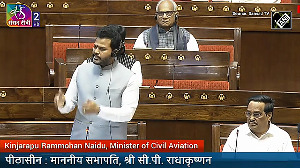The government is set to earn an equity dividend of nearly Rs 13,800 crore from the listed public-sector banks (PSBs), all 12 of them, for FY23, up 50 per cent from Rs 9,210 crore in FY22.

This will be the highest ever dividend for the government from PSBs.
The 12 PSBs in our sample are paying an equity dividend of nearly Rs 21,000 crore for FY23, up 53 per cent from Rs 13,710 crore for FY22.
This was the best year for PSBs in terms of earnings and dividend payment (see the charts).
Among individual PSBs, growth in dividend payouts was driven by State Bank of India (SBI), which declared Rs 10,085 crore, of which Rs 5,740 crore goes to the government.
SBI accounted for 48 per cent of the dividends paid by PSBs in FY23 and 42 per cent of the government’s earnings from PSBs last financial year.

It was followed by Bank of Baroda, which gave Rs 2,848 crore and Canara Bank Rs 2,177 crore.
The surge was driven by a sharp jump in the revenues and net profits of PSBs in the last two years.
The combined net profits of the listed PSBs grew to a record high of Rs 1.05 trillion in FY23, up 57.3 per cent from Rs 66,540 crore in FY22 and Rs 31,818 crore in FY21.
In comparison, at the peak of the bad loan crisis, PSBs had reported a combined net loss of little over Rs 76,000 crore in FY18, followed by a net loss of nearly Rs 59,800 crore in FY19.
For comparison, the PSBs’ combined gross interest income was up 20 per cent year-on-year to Rs 8.51 trillion in FY23 from Rs 7.09 trillion a year earlier.
In the same period, their revenues, including fees and treasury income, were up 15.7 per cent year-on-year to Rs 9.7 trillion.
Growth in PSBs’ revenues in FY23 was fuelled by a rise in lending rates and a recovery in loans.
On the earnings side, PSBs gained from a sharp decline in provisions and contingencies for non-performing assets (NPAs).
Provisions for NPAs were down 9.7 per cent y-o-y to around Rs 97,000 crore in FY23, the lowest in the last eight years.
A sharp rise in dividend payout by PSBs will be a fiscal boost for the government and help it lower the fiscal deficit.
Dividend income comes under non-tax revenues.
However, it will take years of high dividend payouts for the government to recover its large incremental equity investment in PSBs since FY15.
The PSBs’ paid-up capital, or the equity shares owned by their shareholders, including the government, was up more than five times during the period from around Rs 13,900 crore at the end of March 2015 to nearly Rs 72,200 crore at the end of March FY23.
Their equity expanded during the period as the government shored up their depleted capital.
As a result, the ratio of equity dividend to paid-up capital for PSBs was only 0.29 in FY23, less half the record high of 0.61 in FY13.
The ratio indicates the relative dividend yield for shareholders on their equity investment in the company.
The ratio is over 100 for the cash-rich and highly profitable firms such as Tata Consultancy Services and 19 in the case of HDFC Bank.











